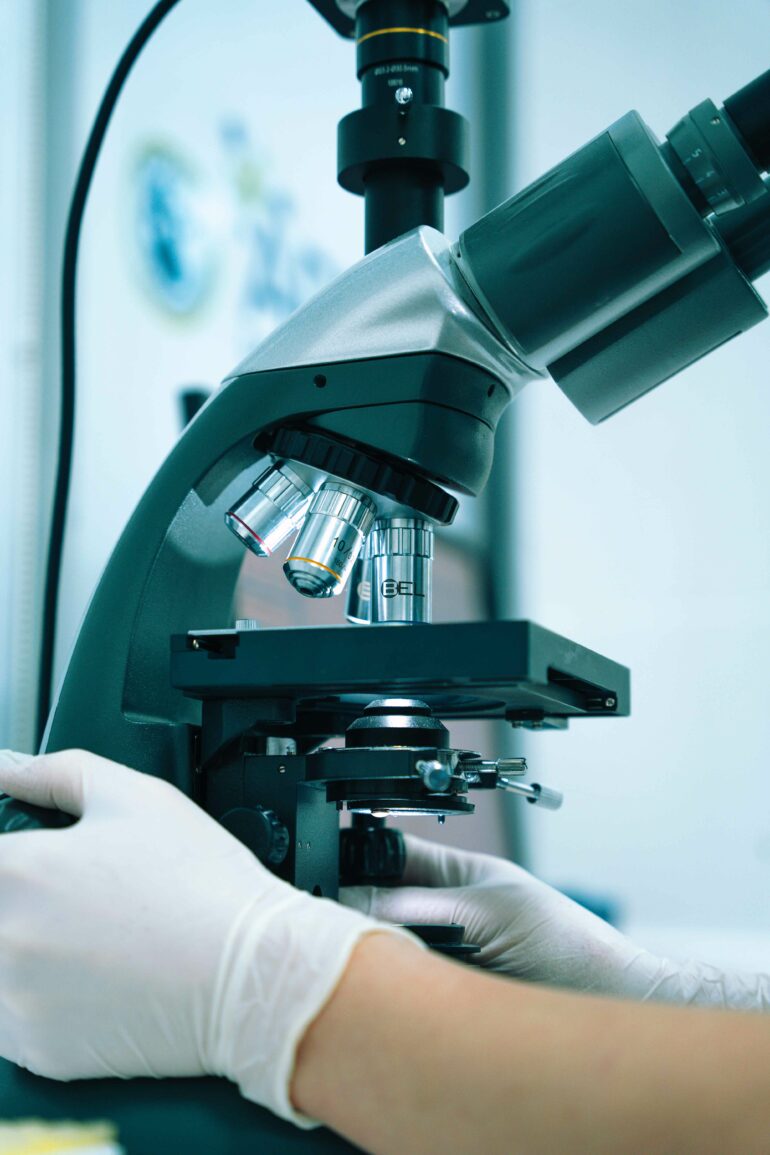From exquisitely flavorful sushi rolls to crispy savory snacks, seaweed is undoubtedly a culinary delight and an integral component of coastal cuisines around the world. Historically, seaweed served as a staple of Japanese, Chinese, and Korean diets, and was also consumed in some Western countries. More recently, seaweed consumption has become more widely accepted as people began to unveil its culinary advantages and, more importantly, its nutritional value. Yet, lurking in the depths of the water is its microscopic counterpart: microalgae, whose consumption and nutritional benefits may appear murky at first glance. However, recent research proves that microalgae holds great nutritional value. In a devastating era of malnutrition and food insecurity, it is time to shed light on microalgae consumption as one sustainable solution for addressing these global issues.
The lack of social acceptance surrounding microalgae consumption greatly hinders people from reaping the health benefits these microscopic organisms have to offer. Microalgae contain a bounty of essential macromolecules: omega-3 fatty acids, minerals, vitamins, carotenoids, proteins, and other bioactive compounds, all of which play key roles in maintaining human health. For instance, omega-3 fatty acids, which make up a large percentage of algal lipids, regulate human metabolism, lower cholesterol levels, and reduce the occurrences of cardiovascular diseases. Other examples of human health benefits include prevention of cancer, paralysis, and vascular disorders. These health issues are associated with deficiencies in vitamin B2, a compound that humans cannot synthesize but must obtain through diet. To reap the health benefits and make microalgae more appealing for consumption, groundbreaking research has helped enhance microalgae’s organoleptic traits: the taste, color, aroma, and texture of microalgae, through genetic engineering. The development of more desirable sensory properties in microalgae can increase consumer acceptance by simultaneously appealing to different consumer preferences, culinary cultures, and nutritional standards.
Usually green with a slimy texture and fishy smell, the sensory aspects of microalgae are clearly unpleasant. However, Schüler et al. developed yellow and white strains of Chlorella vulgaris, a species of green microalga. To create these more visually appealing strains, the researchers used random mutagenesis. In this process, chemicals or physical irradiation induce DNA mutations that generate mutant microalgae strains with yellow or white phenotypes (observable characteristics), differing from the wildtype’s normal green phenotype. Not only did Schüler et al. improve the visual appearance of the microalga, but they also increased its protein content. Enhancing these visual attributes can accommodate a wider range of consumers’ food color preferences, easing its introduction as a potential new high-protein food source that can combat food insecurity and malnutrition. Although there are some successes with developing microalgae strains with more attractive organoleptic traits, methods to rapidly screen a large number of mutant strains and select specific strains with these desirable traits are still needed. This is a complex task because desirable organoleptic traits are very subjective and qualitative, as dietary acceptance of microalgae is highly dependent on individual consumer preferences and cultures.
Developing microalgae strains with more favorable organoleptic properties while simultaneously increasing nutritional value presents several hurdles. The green color of microalgae can be visually unappealing in food. However, eliminating chlorophyll, the green pigment responsible for capturing light energy during photosynthesis, presents disadvantages. The presence of chlorophyll in microalgae contributes to its health benefits in nutraceutical products, food-derived products that provide additional health benefits including protection of the body against free radicals, or unstable atoms that can damage cells. Microalgae are also used in nutraceuticals for its antioxidant, antibacterial, antiviral, antitumor, antihypertensive, regenerative, neuroprotective, and immunostimulating properties. Without chlorophyll in microalgae, one cannot obtain the full extent of its benefits, demonstrating a disadvantage to developing strains solely for organoleptic acceptance. However, embracing microalgae as food cannot be viewed dichotomously: Schüler et al. have demonstrated that nutritional characteristics can be enhanced even without chlorophyll.
By combining green microalgae with other green or dark-colored foods, researchers have successfully fostered greater acceptance for microalgae consumption. Rather than introducing algal biomass as a distinct new food product, Lafarga et al. incorporated a freeze-dried Spirulina species (a green-blue microalgae) and a Chlorella species (a green microalgae) into broccoli soup to encourage social acceptance. Incorporation of algal biomass increased the content of bioaccessible polyphenols, which are a group of naturally occurring compounds in plants characterized by antioxidant properties. In response to environmental factors, such as sun exposure, smoking, and alcohol consumption, the body produces free radicals through metabolic processes, and antioxidants help neutralize these free radicals. Epidemiological studies strongly suggest that polyphenols offer protection against the development of cancers, diabetes, cardiovascular diseases, osteoporosis, and neurodegenerative diseases. In terms of polyphenols exhibiting anti-cancer effects, polyphenols reduce the extent to which cancer cells divide, a mechanism called antiproliferation, and induce programmed cell death, or apoptosis. By combining algal biomass into broccoli soup, Lafarga et al. achieved increased polyphenolic and antioxidant activity in an appealing meal.
In another creative implementation of Spirulina species, Silva et al. added Spirulina maxima biomass into biscuits or cookies and successfully increased the protein content. Spirulina species are extremely rich in proteins, with protein content ranging from 60% to 70%. These proteins contain a nearly complete and balanced set of the essential amino acids: leucine, isoleucine, threonine, phenylalanine, valine, lysine, methionine, and histidine. These are essential components of human diets because they are not synthesized by mammals. Because biscuits are commonly consumed products with generally poor nutritional value, protein enrichment transforms the food into a nutritional product targeted to vegetarians, vegans, and potentially the malnourished population. However, despite these potential benefits, Spirulina maxima biomass typically exhibits an unpleasant flavor and aroma, hence Silva et al. incorporated spray-dried encapsulated S. maxima biomass to mask the undesirable sensorial attributes. Spray-dry encapsulation is a commonly used technique in the food industry to create powdered products while covering them in a protective material. This technique allows manufacturers to produce convenient, stable, and dispersible powders that can be incorporated into different food products with ease. Powderized encasement of S. maxima biomass not only increases the protein content of biscuits, but also improves consumer sensorial acceptance, conveying that microalgae holds remarkable promise as a food additive.
While scientists have made significant progress towards improving consumer acceptance of microalgae consumption, there is currently a lack of research with explicit applications to malnourishment. Nationwide or global distribution of microalgae as food will be challenging because of varying technical and economic feasibility of cultivating and producing microalgae on a large scale. Consuming microalgae as food serves as a potential solution for global issues like malnutrition and food insecurity. As the unsung heroes of aquatic nutrition, microalgae and their dietary applications warrant further exploration. Ultimately, collaboration between scientists, policymakers, and food manufacturers will be crucial to harnessing the full potential of microalgae.
Sources
- https://daily.jstor.org/eating-seaweed-in-the-americas/
- https://doi.org/10.3390/md17050304
- https://doi.org/10.1016/j.fbio.2022.101932
- https://doi.org/10.1186/s12934-020-01459-1
- https://doi.org/10.3389/fbioe.2020.00469
- https://www.acme-hardesty.com/guide-to-nutraceuticals/
- https://www.health.harvard.edu/staying-healthy/understanding-antioxidants
- https://www.ncbi.nlm.nih.gov/pmc/articles/PMC7465300/
- https://doi.org/10.1016/j.lwt.2019.05.037
- https://www.healthline.com/nutrition/polyphenols#benefits
- https://www.ncbi.nlm.nih.gov/pmc/articles/PMC2835915/
- https://www.ncbi.nlm.nih.gov/pmc/articles/PMC2835915/
- https://doi.org/10.1016/j.lwt.2021.110997
- https://doi.org/10.1016/j.lwt.2021.110997
- https://www.ncbi.nlm.nih.gov/pmc/articles/PMC7503953/
- https://doi.org/10.1016/j.lwt.2021.110997
- https://unsplash.com/photos/a-gloved-hand-operating-a-microscope-in-a-laboratory-Qv8JEwWUhSI

